How to grow an apricot?
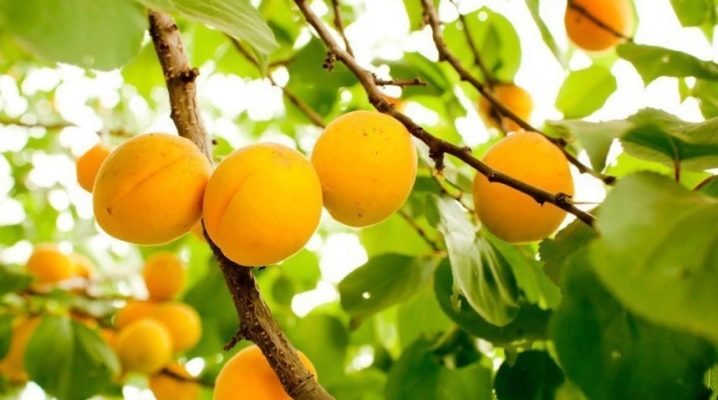
Apricot trees are found in almost every garden plot. Such popularity is due to the unpretentiousness of plants, ease of maintenance. In addition, ripe fruits taste great, so they are not only eaten fresh in large quantities, but also used for jam and other preparations. If you also decided to grow such a tree on the site, then in the article you will find all the information you need.
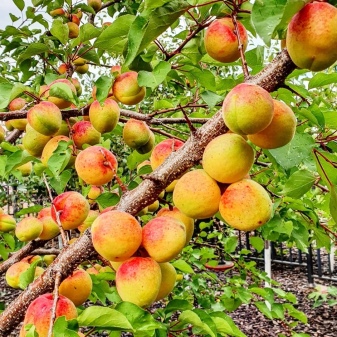
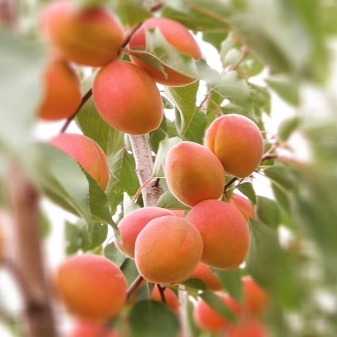
How to choose a variety?
There are many different varieties of apricot. The main difference lies in the timing of ripening. We will build on this.
Early
Such varieties bear fruit already in the first or second month of summer. Their unique feature lies in the fact that they perfectly resist the cold, because the first buds can wake up even during the period of recurrent frosts. Let's describe some good early subspecies.
- "Lel". It is a variety capable of self-pollination, but its yield is not very high. The fruits are even and beautiful, one plant produces about 20 kg. The first collection can be done in the 3rd year of the tree's life.
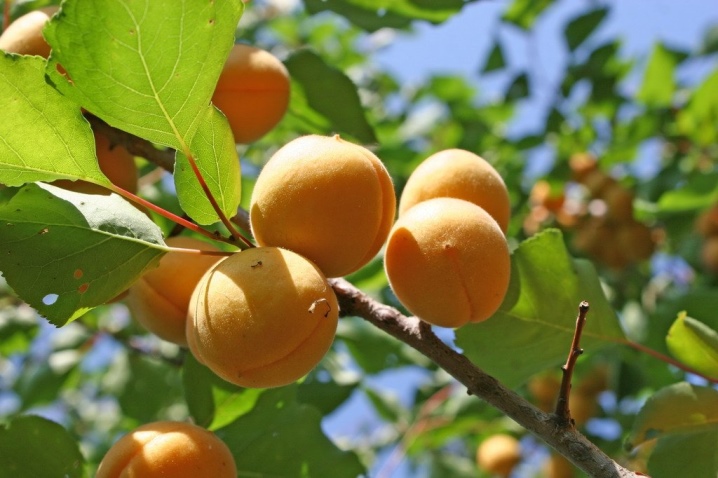
- "Tsarsky"... The variety is remarkably resistant to cold, and the average amount of fruits per tree reaches 30 kg. In addition, the plant is resistant to many ailments.
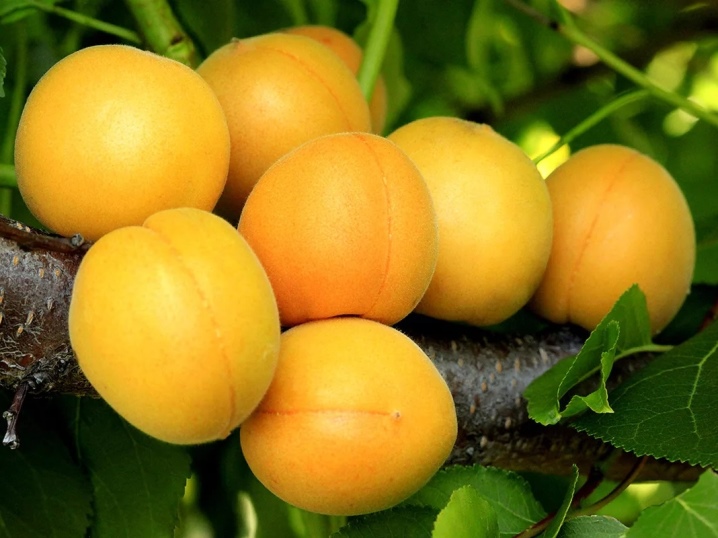
- "Alyosha". This is one of the most demanded subspecies. Very easy to grow, pleases with decent harvests. The fruits are sweet and sour.
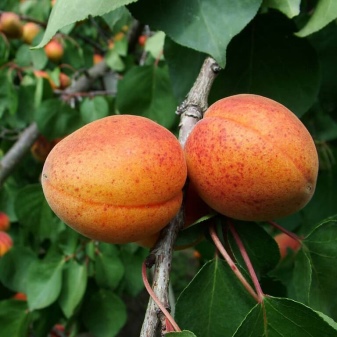

- "Melitopol early". The tree has a pyramid-shaped crown, and its fruits are sweet, large in size.
They are also distinguished by a subtle, very pleasant aroma. The tree is practically not sick with anything.
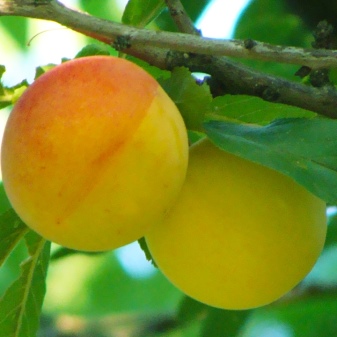
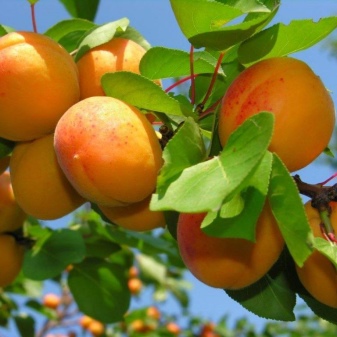
- "Russian". It is a variety with very decent yield indicators. As a rule, one such tree is capable of producing 80 kg of fruit.
But it should be borne in mind that the prevention of diseases for the "Russian" is mandatory.
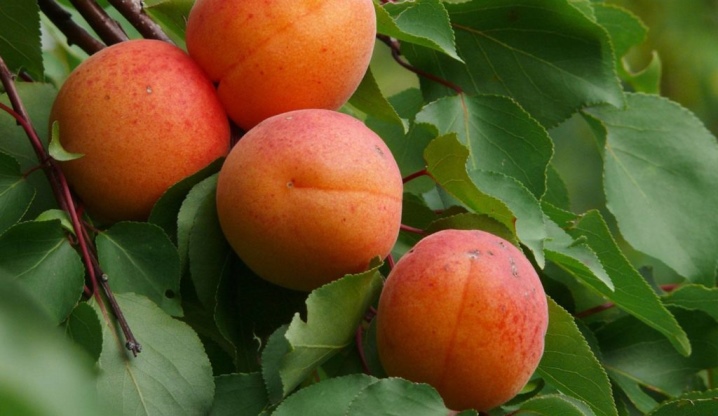
Mid-season
Varieties belonging to this group bear fruit in July and August. They are recommended to be planted in southern regions with consistently warm summer months. Let's consider the most interesting varieties.
- "Aquarius". Trees of this variety grow tall - about 6 meters. Yield indicators are very good - 50 and more kilograms per plant. The species does not resist pests well, therefore it needs preventive measures.

- "Hardy". This variety begins to bear fruit towards the end of summer. The yields are always good, and if frosts come, the apricot will easily survive them. However, for the first time, it will be possible to taste its fruits only in the 5th year of cultivation.
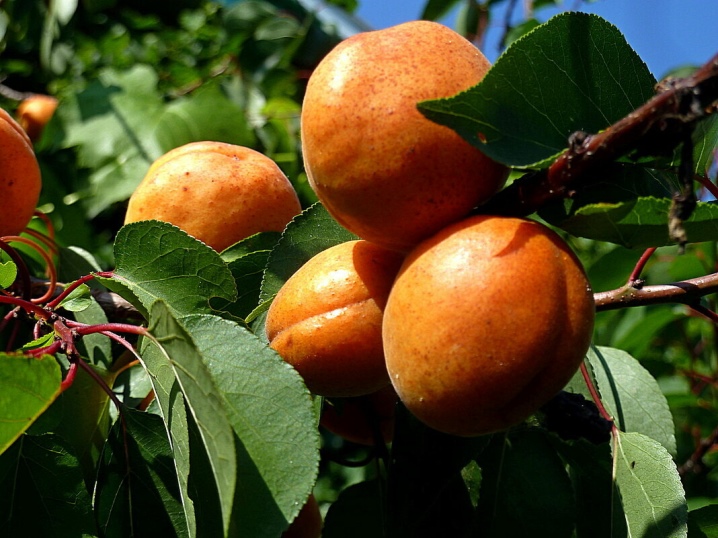
- "Honey". The yields of the described variety are small, but the taste of the fruit exceeds any expectations. You need to plant a tree next to pollinators, since it cannot transfer pollen on its own.
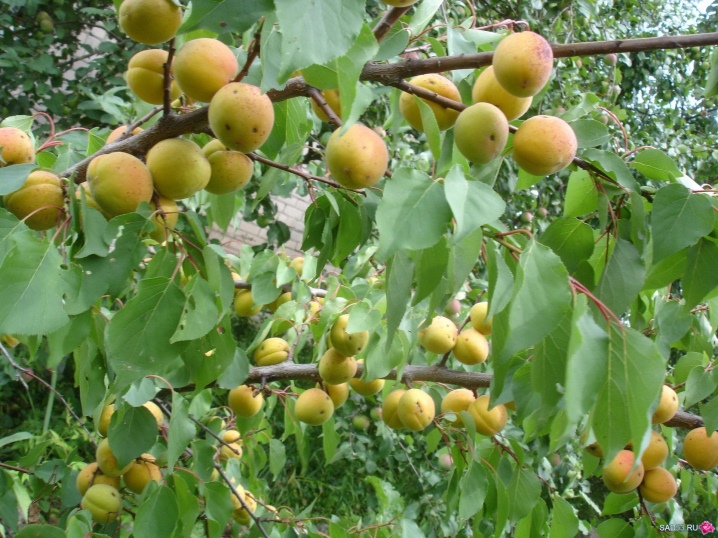
- "Polessky large-fruited"... Will become a favorite variety for those who prefer large fruits. It gives a large amount of harvest, but apricots must be harvested on time, as they quickly turn into carrion.
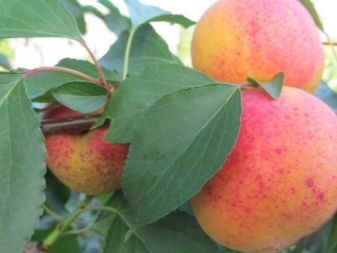

- "Yaltynets". Quite a popular variety, very common. Produces large and sweet fruits with a strong aroma. Unpretentious to grow, suitable for beginners.
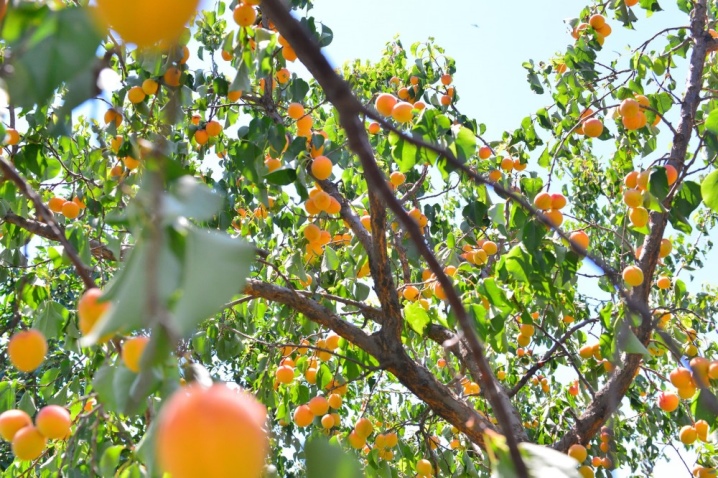
Late
These varieties are recommended for those who plan to start processing or sell apricots. Trees of such varieties are very hardy, because by the beginning of autumn the weather already becomes changeable, the amount of sun decreases. Now let's dwell on the views.
- "Favorite". This tree should be planted in warm regions. The fruits are small in size and taste very good.It will not be possible to harvest a lot of crops, but it will be enough for harvesting. Apricot resists frost perfectly.
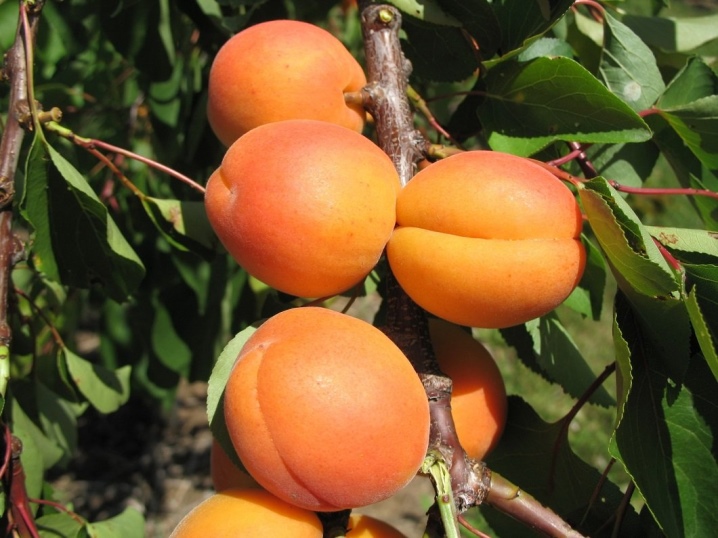
- "Spark". Excellent variety with medium-sized fruits. The yields are stable, the fruits are moderately sour. Begins to bear fruit in the 5th year of growth.
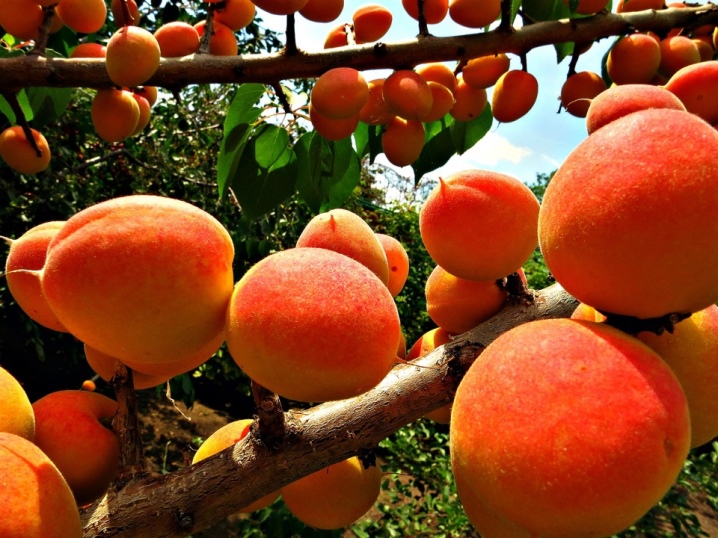
- "Melitopol late"... A very productive subspecies, found more often than other late varieties. Excellent disease resistance, but needs winter shelters. The fruits of this variety can always be found in the markets of the country.
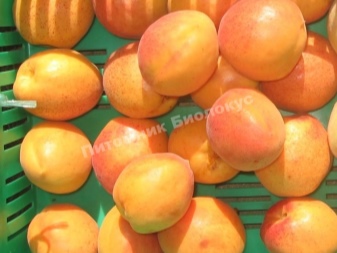

- "Success"... This variety resists frost better than others. Its fruits are yellow, and on the side that was turned to the sun, small red spots are widely scattered. The tree does not need pollinators.
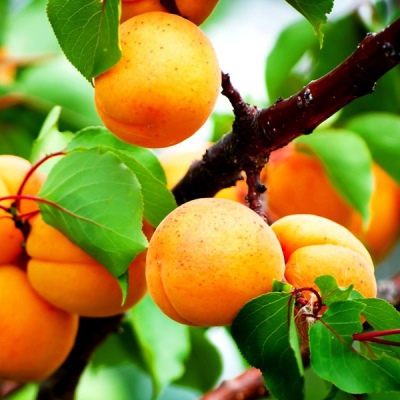
- "Kostyuzhensky". The variety is planted in areas with warm autumn, otherwise it will slowly ripen. Produces beautiful orange speckled fruits that are sweet and tasty.
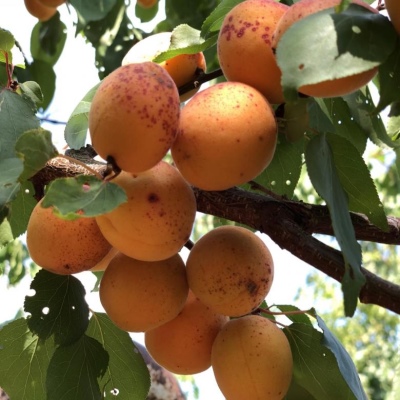
In addition to the ripening time, when choosing, it is worth additionally considering the following:
- the ability to self-pollinate;
- exactingness to soil and care;
- ability to withstand frost.
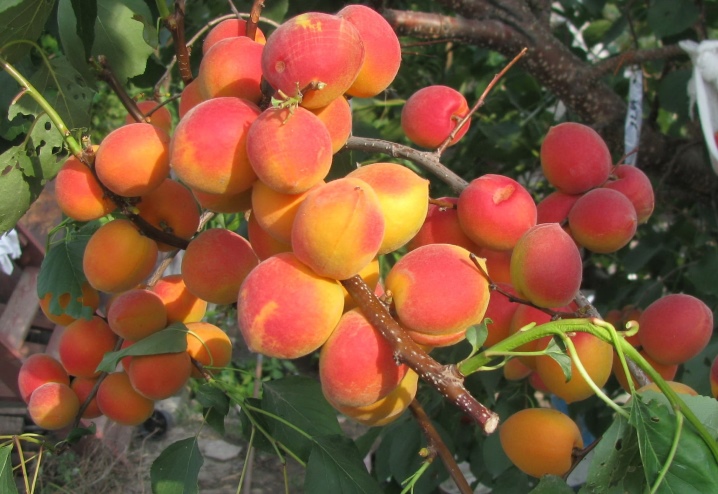
Separately, it is worth noting the varieties that are best adapted for growing in the Moscow region. In addition to "Hardy" and "Honey", these will be the following varieties:
- "Red-cheeked";
- Northern Triumph;
- "Snegirek".
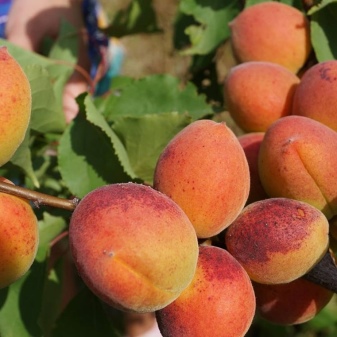

When to plant?
It is quite easy to determine the time of planting an apricot, you just need to take into account the climate of the growing area. So, in Siberia and the Urals, it is recommended to land in early spring. Usually this is the beginning of April, you need to choose the moment so that the buds have not yet blossomed. This technology should be followed in any northern regions.
In the southern part of Russia, planting in the fall is permissible. The procedure is carried out in early October, then before the onset of cold weather the seedling is fully adapted.
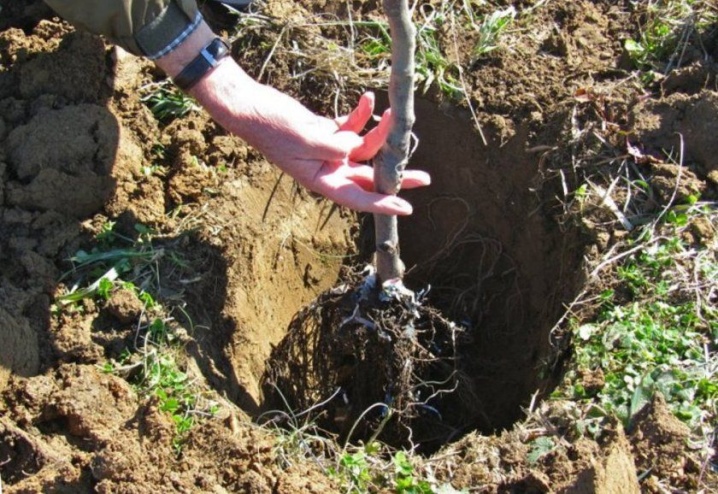
As for the middle zone of the Russian Federation, both spring and autumn planting will be appropriate here. There is no difference between the dates, since the mild climate allows the seedlings to take root without problems.
Landing
Before planting apricot it is very important to choose the right site for the growth of this culture... The plant will not tolerate a lack of sun, so it is planted in the most illuminated places, even or slightly elevated. The culture is not very afraid of drafts, but the wind should not be too gusty and cold.
Apricot doesn't like acidic, alkaline or salty soils. It is best to plant it in a fertile and light soil with low acidity.... Loam is also fine, but not clayey, too wet soil.
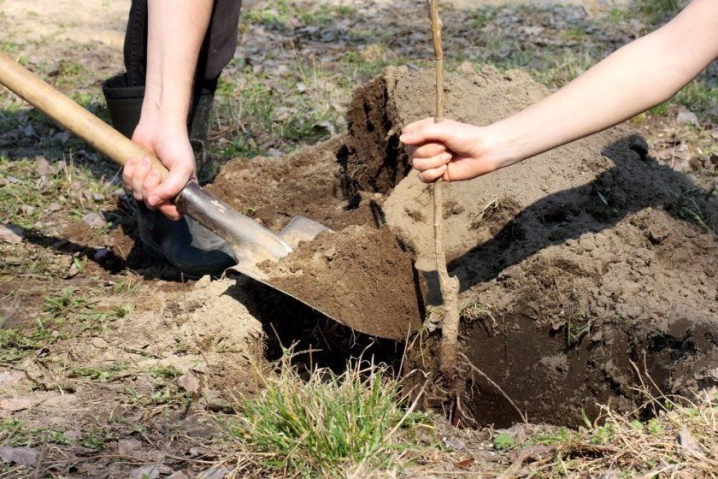
Stagnation of groundwater must be avoided, otherwise the roots of the culture will quickly rot. If they are close, you need to choose another place or arrange good drainage.
In addition to choosing a site, you should also pick up a good seedling. If you buy it from the nursery, you need to be especially careful. So, a young plant must be vaccinated. If it is not there, then this is a simple wild sapling. The root system of the selected specimen should be fairly developed, well-branched. This will mean that the seedlings were looked after. The trunk cannot have cracks, streaks, peeling bark.
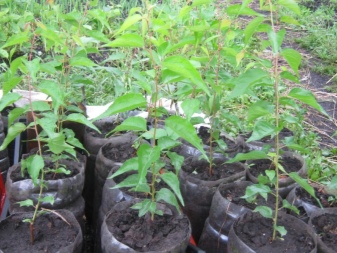
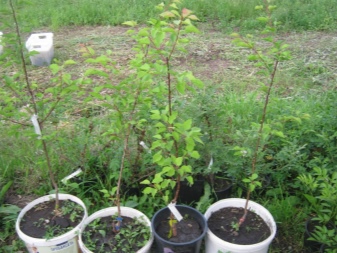
Regardless of the chosen planting dates, the well has to be prepared in the fall so that the earth has time to settle and be saturated with useful elements. The diameter and depth of the pit should be 80 cm, these parameters are optimal for seedlings at the age of one year.
If the plant is older or younger, the indicators will have to be adjusted independently, taking into account the size of the root system.
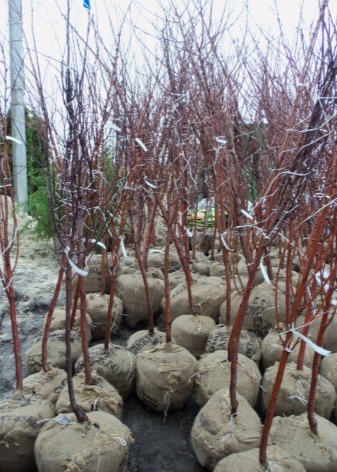
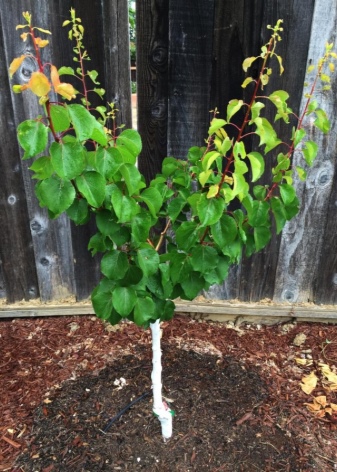
Having dug a hole, a support is installed in its center. It must have a certain height so that after planting the plant, a 0.5 meter peg remains on the surface.... The lower part of the hole is lined with a layer of gravel - this will be a drainage system. Further, 1 part of humus (can be replaced with peat), superphosphate (0.5 kg), wood ash (2 kg) is taken for 2 parts of the soil extracted from the pit.Everything has to be mixed, and then returned back to the pit, and with a slide. The necessary shrinkage will occur until spring, and the seedling will take root perfectly. If the landing is planned in the fall, then the pit must be prepared in a month.

Prepare the seedling 24 hours before planting.... It is examined, removing non-viable dry roots, and then placed in water. After the plant is saturated with moisture, the roots will need to be briefly lowered into a chatterbox - this is a product consisting of liquid clay and manure. After completing the process, the plant is placed in a pre-dug hole. The roots are well straightened to avoid damage in the pit, after which the young apricot is covered with earth, not forgetting to lightly tamp it. In this case, the growth point should be located 5 cm above the ground level. After planting, the plant is watered with 20 liters of water. You can tie it to a support after a couple of hours, when the liquid is absorbed and the growth point drops to the ground.
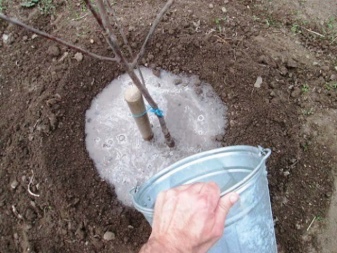

Care
Growing a healthy apricot is not as difficult as it might initially seem.... But the care of a young tree must be meticulous, since the seedling only adapts to new conditions. The older the tree, the less care it needs. Consider the main stages of caring for a seedling.
Watering
Most apricot varieties tolerate drought well, but it is still impractical to experiment with watering, since they directly affect the winter hardiness of trees... The very first irrigation is required even before the start of the flowering culture. Such watering will give the tree energy, start rapid growth.
The next irrigation is done after the apricot has faded. Then he will be able to give more sugary and large fruits with excellent juiciness.

Another plant will need to be watered 14 days before the onset of fruit ripeness. In the northern regions, water-charging watering for apricots is absolutely contraindicated, although this may seem surprising. After harvesting, the tree cannot be watered, otherwise it simply will not survive the winter. But in the southern regions, you can water it for the last time in October (from 50 to 100 liters of liquid).

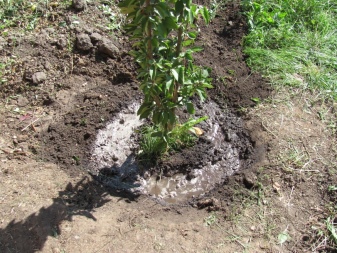
Additional recommendations:
- watering is carried out with warm water;
- the liquid should stand in the sun for a couple of hours before that;
- the older the tree, the more water it will require (the calculation is done by age, for example: a one-year-old seedling needs 10 liters at a time, a two-year-old one - 20, and adult trees may require 40 liters);
- watering is carried out only along the grooves, it is forbidden to water with a hose.
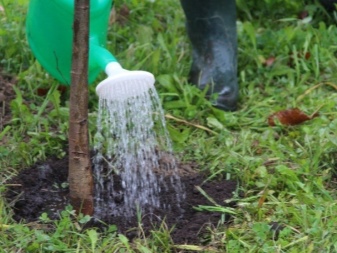

To keep the water in the soil longer, young apricots can be mulched. For this, fresh grass, sawdust, straw and other materials are used in the garden.
However, it should be borne in mind that mulching is acceptable only in the first two years, then it will only be harmful, since the roots will not extract moisture well themselves. You can also plant perennials to retain moisture near the apricot.

Pruning
This procedure is very important for apricot, as for any other fruit tree. It will not be possible to properly grow a crop without pruning, since such apricots grow thickened, and the crown does not acquire the proper shape. Besides, the apricot ovaries do not fall off on their own, which means that the fruits may be too heavy for the branches, causing them to break.

The first pruning should be done in the spring, at the beginning of the season, before the buds swell. Very important identify branches that have dried or frozen over the winter, and remove them. In addition to sanitary, the tree will also need formative pruning. It allows you to properly form the crown, and also thinns it, reducing the chances of pests and diseases. The crown formation may look different, but the most popular is the sparse-tiered one. We will consider it:
- in the second year of the seedling's life, the central conductor is shortened in the fall (1/4);
- in the third year, the 2 most powerful skeletal branches are chosen, cut by ½, the rest of the specimens are cut into a ring;
- together with the trimming of the skeletal branches, the conductor is also trimmed, and so that it rises 0.3 m above them;
- the last procedure this year is the harvesting of branches that grow at the wrong angle;
- in the following seasons, additional skeletal branches are formed (from 3 to 5), while there must be branches on them (the distance between the branches is 0.3 m);
- when the 7th skeletal branch is formed, it will become the last (the central conductor is shortened to its level).
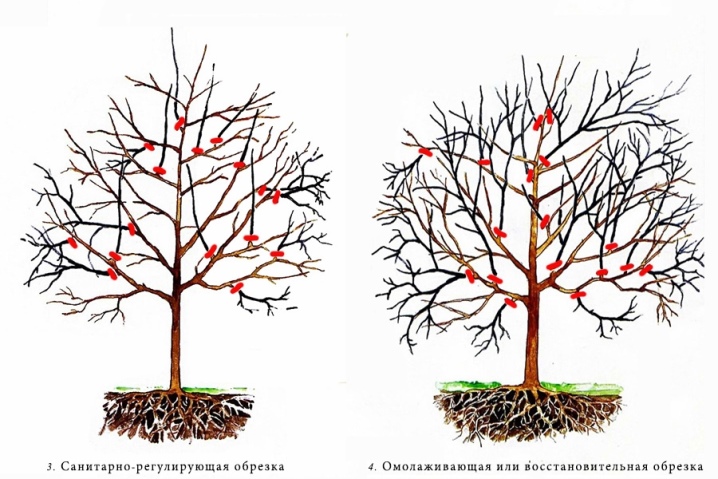
Having finished the work with the crown, it remains only to carry out the thinning pruning in a timely manner. The branches should not grow densely and intertwine. If the tree grows too fast, it will have to be pruned annually, cutting down the strong shoots by ½. After slowing growth (old trees), they begin to carry out anti-aging pruning, shortening the skeletal branches to wood aged 3-4 years.

Novice gardeners are also interested in whether to prune thorns with buds. The scientific name for such formations is a spear, and over time they themselves disappear. On a tree at the age of 6 years they will definitely not be.
Cutting the spear is pointless, it does not affect anything. But if pruning has been done, the tree will recover pretty quickly.
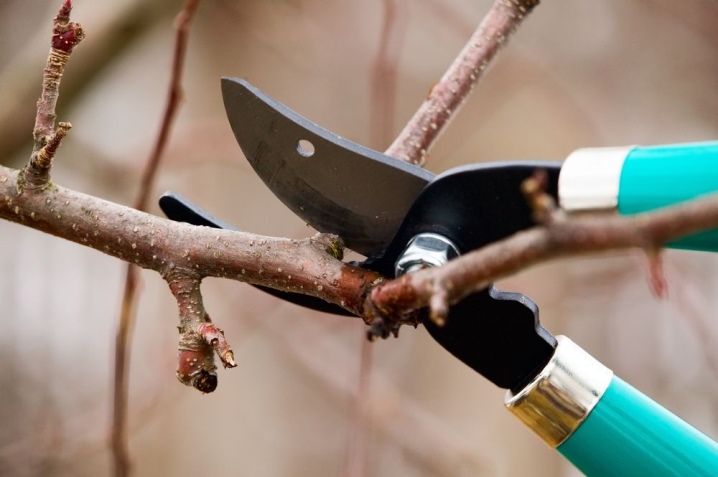
Top dressing
Plants love fertilized soil, so in the spring it should be fed with nitrogen. You can take chicken manure or mullein, as well as urea.
During the active growing season, the apricot will need several dressings. In the first month of summer, nitrogen is added, as well as phosphorus and potassium.... Fertilizers are poured into the soil or sprayed on a leaf. After July, nitrogen is excluded, leaving only potassium and phosphorus. The same top dressing is applied to the tree after harvesting the fruit. Also, during this period, apricots in the country need to be fertilized with calcium: for this, chalk is scattered over the surface of the substrate.
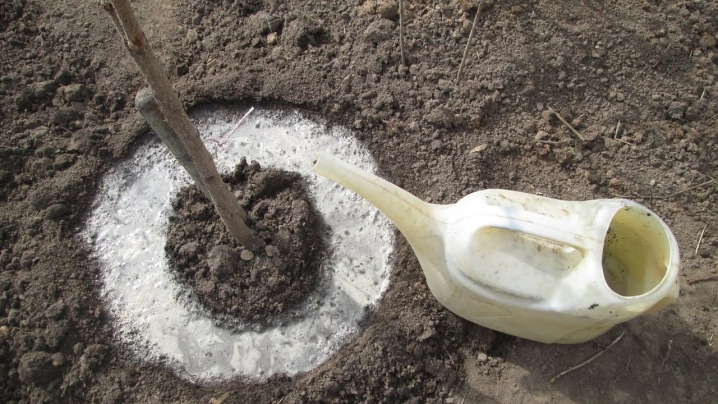
Other tips:
- organic matter is applied every couple of years, dosage per 1 sq. m is as follows: manure - 4 kg, compost - 5 kg, chicken manure with minerals - 0.3 kg;
- nitrogen fertilizers - no more than 40 g per square meter;
- potassium salt - 40 g per sq. m;
- superphosphate - 200 g.
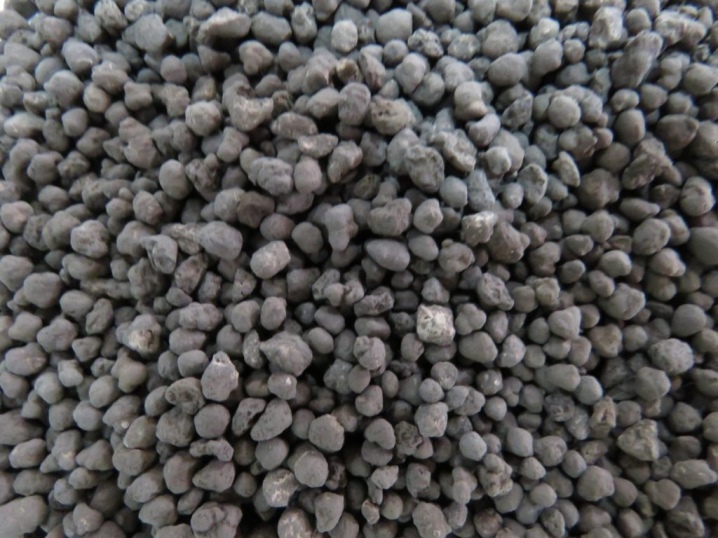
Preparing for winter
Young seedlings need protection for the winter. Mature trees can withstand up to 30-40 degrees of frost, depending on the variety. If the indicators are higher, they will also need to be covered. The procedure is very simple. To prevent the apricot from freezing, spruce branches are applied to the trunk, and the tree is protected from above with a covering material, for example, spunbond. The lower part of the plant is to be hilled. The seedlings prepared in this way will easily endure the winter.
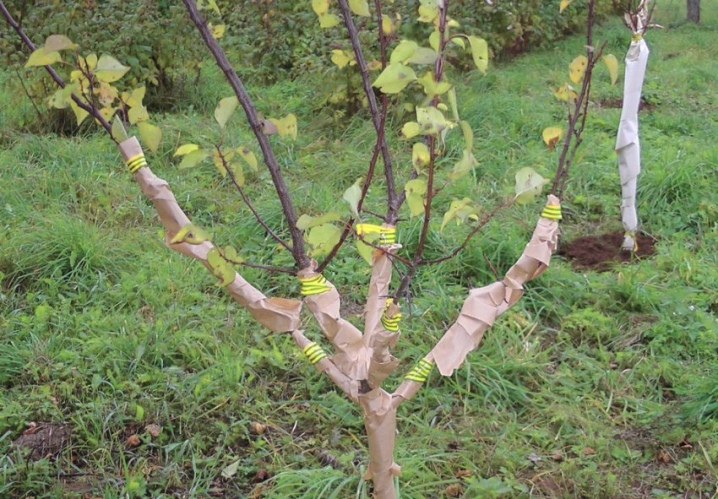
Reproduction
There are three ways to propagate apricots. Let's consider each of them.
Seeds
The method involves growing a plant from a seed. It is long but simple. They take a few bones, wash them in clean water, then immerse them in water for 24 hours. The ones that have surfaced are discarded, and those that remain are buried 6 cm into the ground, while the latter must be moistened. The procedure is carried out in September. Throughout the fall, they monitor the moisture of the soil; you can put fallen leaves on top to retain moisture. In the spring, the bones will sprout, and you will need to take care of them: water, loosen. A transplant to a permanent place is carried out next fall.

By shoots
This is the most rare method, since apricot grows only after an invasion of rodents or in case of any violations. If there is still growth, then in the spring it is necessary to bare the roots by excavating the soil around. The shoot is taken along with a piece of root, and then simply planted in the place chosen for it.
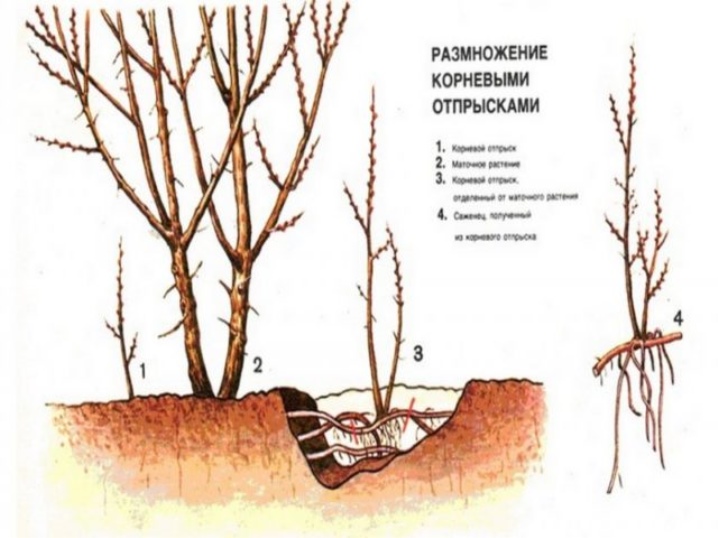
Cuttings
Lignified cuttings are most suitable in this case.... In the fall, a strong flexible twig 0.3 m long is cut off, wrapped in a plastic bag and placed in the refrigerator. In the spring, they are planted in a nutrient substrate so that there are 2 buds above the ground. The room temperature should be a maximum of 20 degrees. After the sprout acquires roots, it is planted in open ground.
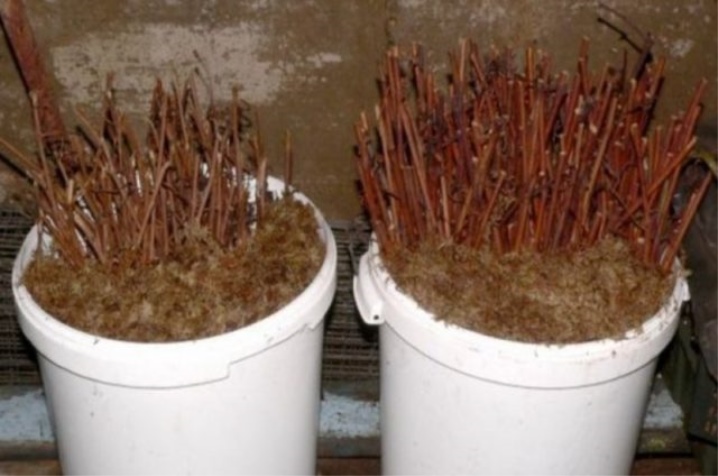
Graft
It is used if you want to change or improve the characteristics of the cultivated variety. Rootstocks can be different. For example, if grafted on a peach, the apricot will turn out to be very tall, but it will be difficult for it to resist the frost. And if grafted on a thorn, you get a decorative dwarf tree. The choice must be made by the gardener himself.
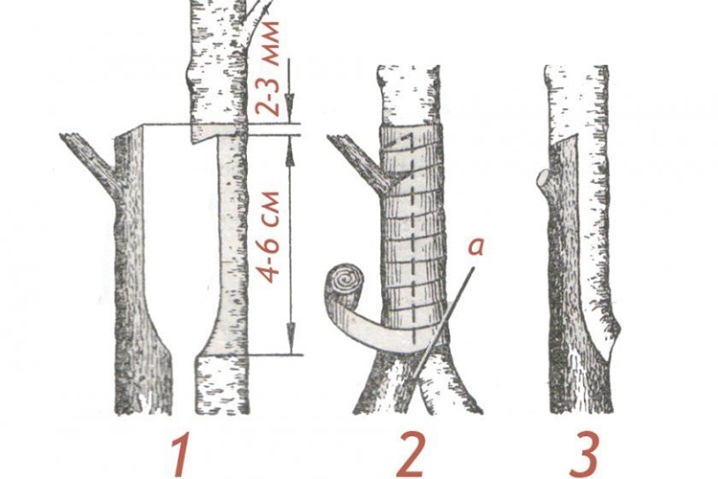
Trees are cut in the fall, while the age of the seedling should be 1 year. The upper cut is made oblique. Next, the twigs are placed in the refrigerator. In the last month of spring, copulation is carried out - they connect the scion to the stock, the latter must also have an oblique cut. Both the stock and the scion must match, forming a single system. Further, garden var is applied to them and tightly wrapped with tape. You can remove the winding after about a month.
Important: with any method of propagation, seedlings are not grown in apartments and greenhouses. They need a cool regime.
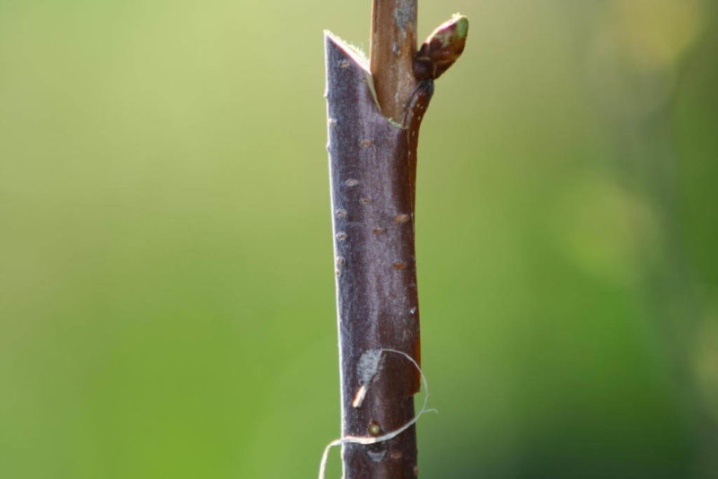
Diseases and pests
Disease and pest resistance depends on the variety. Some apricots hardly get sick, while others need constant prevention. We list the most common ailments and dangerous parasites that can destroy these fruit trees.
- Cytosporosis... A fungal disease that causes bumps on the bark and its subsequent death. You can cure with fungicides - and then only at the beginning. Prevention - treatment with Bordeaux liquid in the spring.
- Moniliosis... Because of this ailment, the branches and leaves on the trunk begin to dry quickly and crack. Bordeaux liquid will help in the fight, as well as the Horus fungicide.
- Clasterosporium disease... It is characterized by the appearance of spots on the foliage, later this part dies off, holes appear. To prevent ailment in the spring, spraying with Bordeaux liquid is carried out. When the buds are formed, use "Mikosan".
- Aphid... A common pest that parasitizes foliage. Because of it, the leaves become sticky and curl, dry out. You can fight the insect with Fitoverm; laundry soap has also shown itself well. Ladybugs will also help.
- Weevil... Small beetles usually migrate from other crops. They can be seen with the naked eye, therefore, if there are few insects, then you can collect them by hand. In case of dominance, you will have to apply insecticides.
- Moth... This butterfly makes egg clutches, from which gluttonous caterpillars hatch later. So that the insect does not have a chance, it is necessary to follow agricultural technology, carefully digging up the site in the fall. In addition, copper sulfate also fights well with the moth.










The comment was sent successfully.